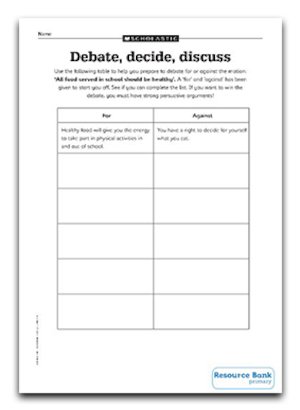Debating the issue
Add to My Folder
Teach children why rules are made and how to draft and vote for their own

In the activities that follow, children are going to learn why we need rules, and how governments make laws in a democracy. They will also find out, in theory and practice, what makes a democracy. They will have a debate on a topical issue and generate ways of resolving differences.
The activities have obvious cross-curricular links with English, especially persuasive writing and speaking and listening. There are also numerous connections with British Values and SMSC.
The children will be given much of the information that they need, but will also be asked to contribute what they already know and what they have picked up about topical issues from the media. Relevant ICT links are also provided. Recording and reporting of citizenship can be difficult, so ensure you keep any notes, take photos and make a big display!
Ages 7-9
Rules of debate
Learning objectives: to resolve differences by looking at alternatives; to compare arguments.
You will need: Activity sheet: ‘Debate, decide, discuss’; space for children to enter a ‘yes’ or ‘no’ lobby; pens and papers for children to make notes; whiteboard.
Explain to the children that an important part of their citizenship studies concerns rules and laws. Ask if anybody knows any class/school/lunchtime rules. Then ask if anybody knows of any laws that people must follow. If necessary, prompt them by asking about rules concerning driving or voting. Explain that people must agree upon rules and laws, if they are to be effective. Does the school have a school council which helps to make rules in the school?
Published 15 September 2019
Reviews
You need to be signed in to place a review.


